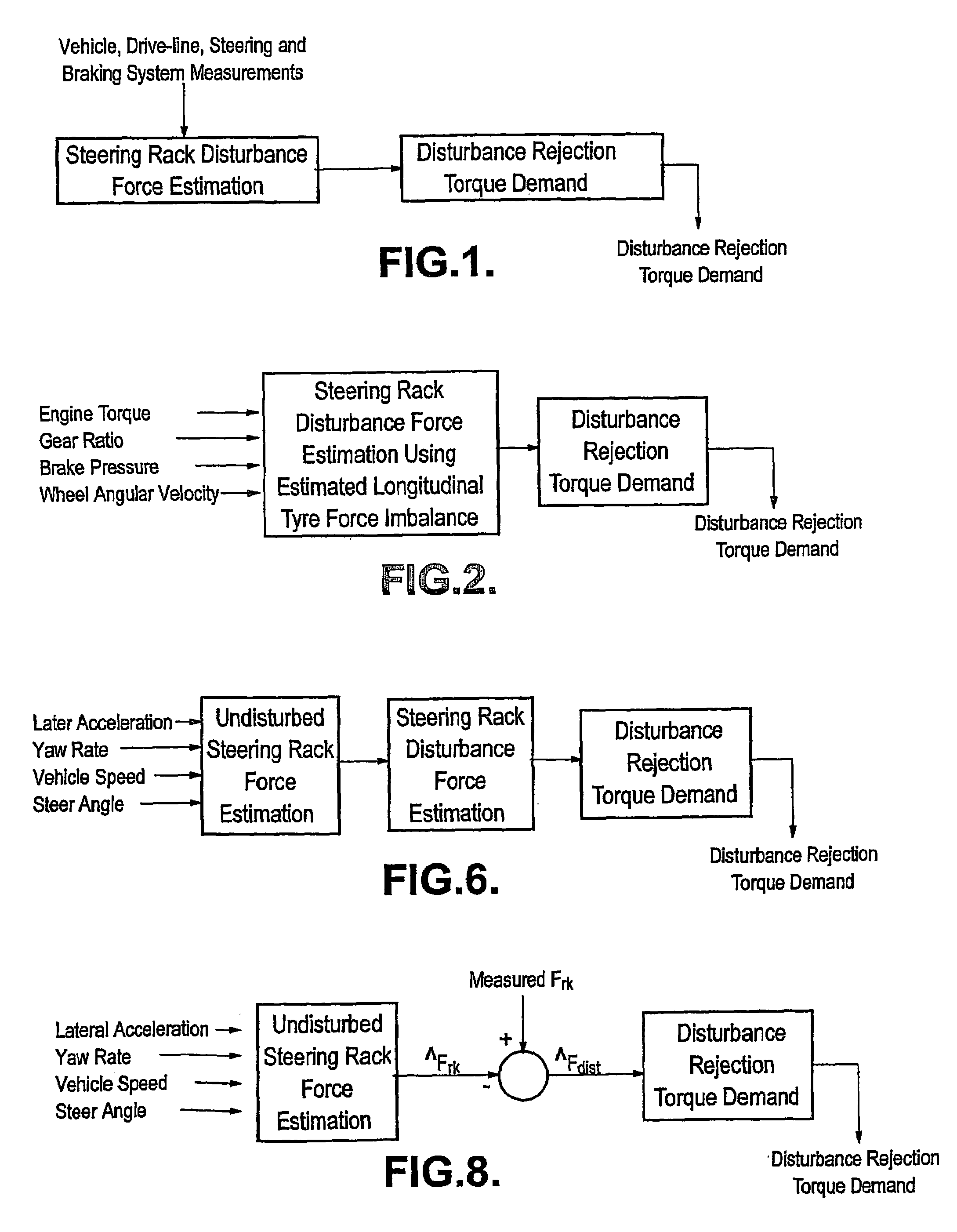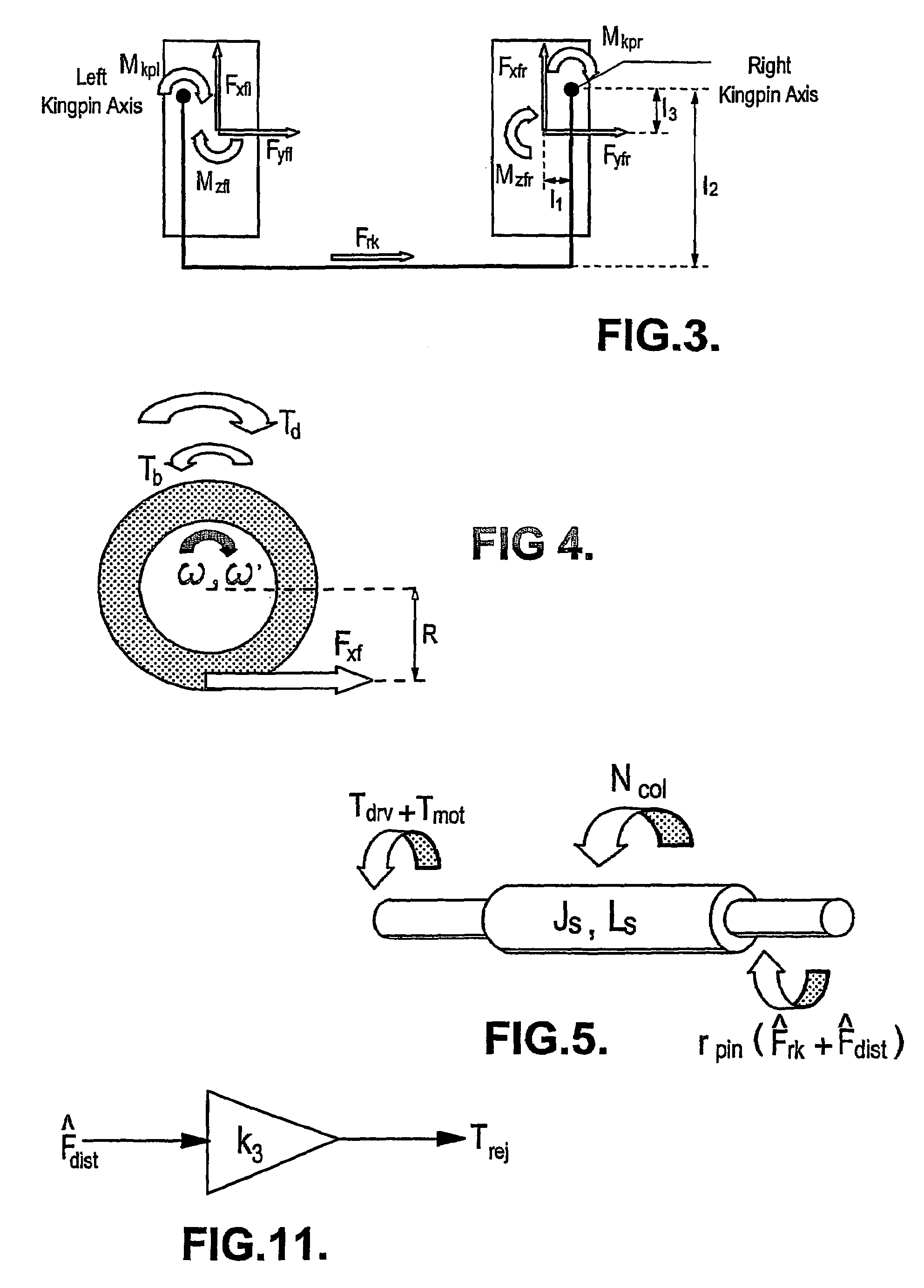Rack force disturbance rejection
a technology of disturbance and rack force, applied in the direction of steering initiation, instruments, vessel construction, etc., can solve the problems of dangerously affecting the stability of the vehicle, adversely affecting the subjective evaluation of the vehicle, and lateral tyre forces, so as to improve the disturbance force of the steering rack
- Summary
- Abstract
- Description
- Claims
- Application Information
AI Technical Summary
Benefits of technology
Problems solved by technology
Method used
Image
Examples
first embodiment
[0058]the control algorithm uses measurements or estimates of the engine torque, brake pressures and wheel speeds to estimate the disturbance due to longitudinal tyre force imbalance (see FIG. 2).
[0059]Steering geometry design commonly has the lines of action of the tyres' longitudinal forces placed so that the forces create a moment about the kingpin axis (see FIG. 3). As the geometry is symmetrical about the longitudinal axis of the vehicle, equal longitudinal forces cause equal and opposite kingpin moments (i.e. they are balanced). Any imbalance in the longitudinal forces will cause an imbalance in the left and right kingpin moments and result in a force which will be passed on to the driver via the steering rack.
[0060]In a FWD or 4WD vehicle the differential splits the engine torque equally between the left and right front wheels. There will be no longitudinal front tyre force imbalance if this equality of drive torque is combined with both wheels having constant angular velocit...
second embodiment
[0070]the control algorithm has three stages (as shown in FIG. 6). It initially estimates the force on the steering rack expected when an idealised, undisturbed vehicle undergoes the actual measured motion of the vehicle (for example its speed yaw rate, lateral acceleration and steer angle). It then calculates the disturbance force on the steering rack using either a measurement of the total force on the rack or an observer of the motion of the steering column using measurements of steering wheel torque, assistance torque and steering column angular velocity. The control algorithm then manipulates the steering rack disturbance force estimate into a demand torque to compensate substantially for the disturbance.
[0071]The first embodiment only considers the effect of longitudinal tyre force disturbances. As previously stated, variation in tyre lateral forces and self-aligning moments and suspension deflection forces can also induce disturbances in the steering rack. The first embodimen...
PUM
 Login to View More
Login to View More Abstract
Description
Claims
Application Information
 Login to View More
Login to View More - R&D
- Intellectual Property
- Life Sciences
- Materials
- Tech Scout
- Unparalleled Data Quality
- Higher Quality Content
- 60% Fewer Hallucinations
Browse by: Latest US Patents, China's latest patents, Technical Efficacy Thesaurus, Application Domain, Technology Topic, Popular Technical Reports.
© 2025 PatSnap. All rights reserved.Legal|Privacy policy|Modern Slavery Act Transparency Statement|Sitemap|About US| Contact US: help@patsnap.com



